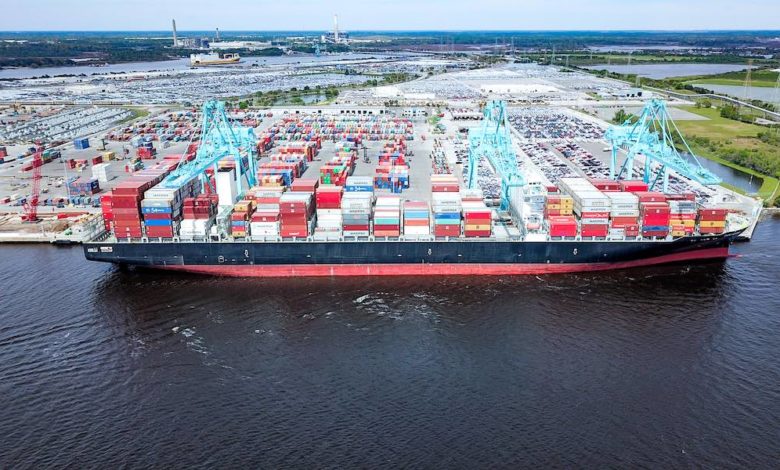With just two weeks left to strike a deal the prospect of 45,000 American dockworkers downing tools come the start of next month now looks highly likely.
Contract negotiations have broken down between the International Longshoremen’s Association (ILA) and port operators on the US east and Gulf coasts. The current agreement, which covers workers at facilities including six of the 10 busiest US ports, expires September 30.
Harold Daggett, the ILA’s president, warned earlier this month in a video uploaded to the union’s website: “The ILA most definitely will hit the streets on October 1st”. The union has been seeking wage increases in excess of 70%, plus commitments from terminal operators to avoid automating operations at their facilities.
Daggett’s son, Dennis, who serves as the union’s vice president, stressed in a podcast yesterday: “In regards to automation or semi-automation, we’re completely against any type of robotic taking over an actual human being’s job.”
The United States Maritime Alliance (USMX), which represents the port employers, stated last week there was still little sign of the two sides reaching agreement.
“A coastwise strike at US East and Gulf Coast ports now looks certain to start on 1 October 2024,” analysts at Linerlytica warned in their latest weekly report.
The 14 ports controlled by the ILA handled 28.4m teu of containerised cargo in 2023 or almost 550,000 teu each week. For each week that the strike continues, it would hold up 1.7% of the global containership fleet, according to Linerlytica data, with an indefinite strike expected to affect over 4.5m teu of the fleet, accounting for 15% of the total containership capacity.
Looking at the repercussions of a strike, HSBC suggested in a new freight market report that imports from Europe and Latin America could be stalled and diversions of Asian imports could congest the west coast while issues surrounding container fleet and equipment shortages could resurface again.
“A US port strike would likely reset the clock on containership capacity and box shortage and could spike freight rates,” HSBC warned.
“Shippers are transferring their cargo from the US East Coast to the West Coast to avoid the planned ILA strike in October, resulting in a drop in demand,” Drewry stated in a market update last week. The Port of Long Beach, for instance, saw cargo volumes rise 34% in August.
Danish carrier Maersk warned in a recent advisory to clients that should a general work stoppage occur, even a one-week shutdown could take four to six weeks to recover from, with significant backlogs and delays compounding with each passing day.
Experts at Sea-Intelligence, a Danish container shipping analyst firm, suggest that for every one day of strike, it might well take at least four to five days to “clean up” to get back to normal. A one-week strike on October 1 would lead to large congestion problems into mid-November, according to Sea-Intelligence, while a two-week strike would mean ports would not get back to normal operations until 2025.
An advisory issued this week by Hong Kong-based Ensign Freight warned shippers of the risk of accumulating demurrage and detention fees if the strike occurs, leading to significant operational challenges.
“Once the strike starts, East Coast terminals will not be able to release import containers or accept returns and exports. This is a historic situation, as there hasn’t been a strike on the East Coast in 40 years,” Ensign cautioned.
Take the Survey at https://survey.energynewsbeat.com/

